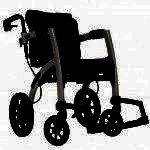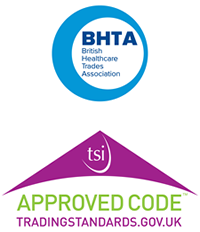
This is a brief guide written to help with the selection of the right walking aid to help you maintain personal mobility. Please be aware that everyone's requirements differ and that you should base your decision on the user's particular needs and preferences and if needs be, or if you are in any doubt, you should seek advice from medical and care professionals.
What is a rollator ?
A rollator is a portable device that provides support for someone who can stand and walk independently but might be be a little unsteady on their own or who tires easily when walking unaided. This includes individuals with stiff and or weak joints, arthritis or any other condition that restricts movement. Rollators also come with a built in seat allowing the user to sit or take rest. Please check the maximum weight specification if it is to be used by a larger user to ensure the frame is strong enough to provide the support when seated.
Lightweight rollators frames are generally made from aluminium which is lighter than the alternative steel frames but not as strong. As the user has to push the rollator, a lightweight model is often preferred.
Rollators come in various designs and sizes and some are better suited for indoor use only whereas other models can be used inside or outdoors. Look at the wheel size to determine how well it will work outside where the ground can be uneven. A bigger wheel will cope with outdoor surfaces and will make turning and pushing the rollator easier.
One key consideration is size. Most rollators have height adjustable handles that cater for most users within the typical height range of 5' to 6'. Some brands including Topro rollators produce their models in a range of sizes to ensure you get the best fit possible. The key here is to allow the user to walk as upright as possible to avoid stooping and the back ache that can result.
The rollator frame width is also a factor in ensuring a stable and comfortable walking position and a seat that is adequate and comfortable. You want a frame that provides good all-round support that does not restrict movement. However, avoid a frame that is too wide as it will be uncomfortable for the user if their hands are too far apart.
Rollator handles are an important consideration as they need to be comfortable and ideally ergonomically shaped made from easy grip material so the user feels comfortable and doesn't have to grip tight to feel secure even if the user has cold, stiff or wet hands.
On board storage is all important whether the rollator is to be used inside out outside. Generally when used inside folk like to be able to move their essentials with them, like a newspaper, book or a phone. If they are to be used outside by users with greater mobility, then a storage area that will hold small shopping items are important. This type of storage is typically an under seat bag or a tray.
Finally, most rollators fold so that they can be stowed for storage and transportation. You might want to look at the folded width if the space you have available is limited.
Rollators are fitted with brakes that are operated by the hands from the handles which allow slowing and stopping to provide as much support as possible. Brakes are often the loop handle type that are easiest to use and require only a slight pressure to operate. This type of brake are favoured by folk with limited strength or arthritis in the hands.
If you feel that you still want advice then please feel free to call us so that we can advise on the most suitable rollator for your needs.












